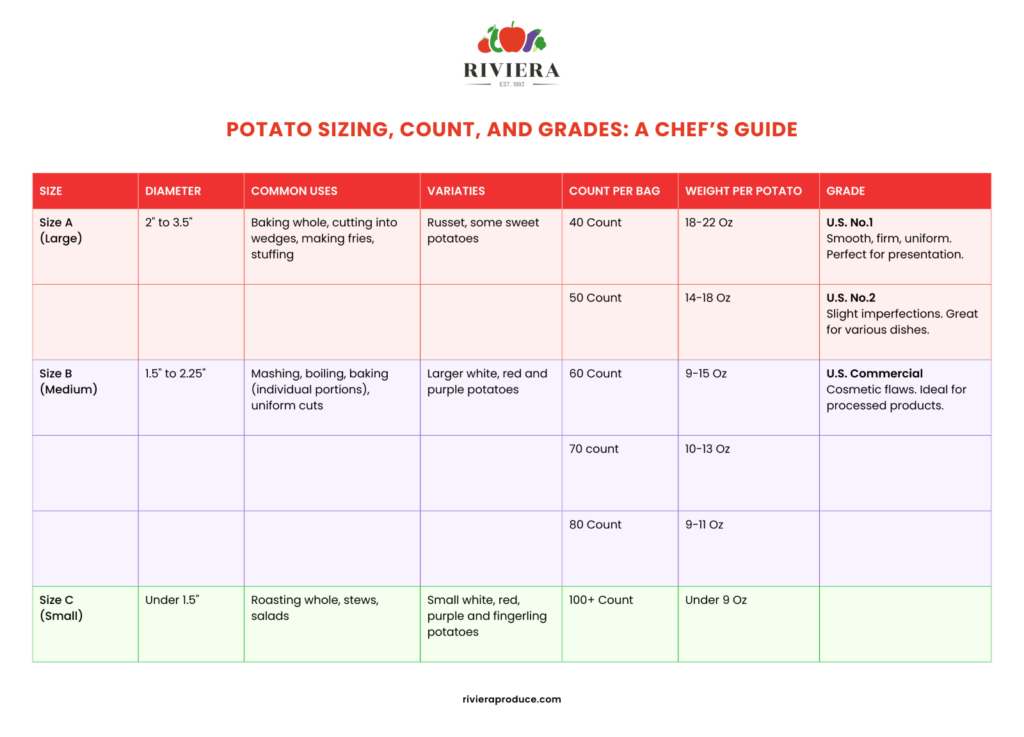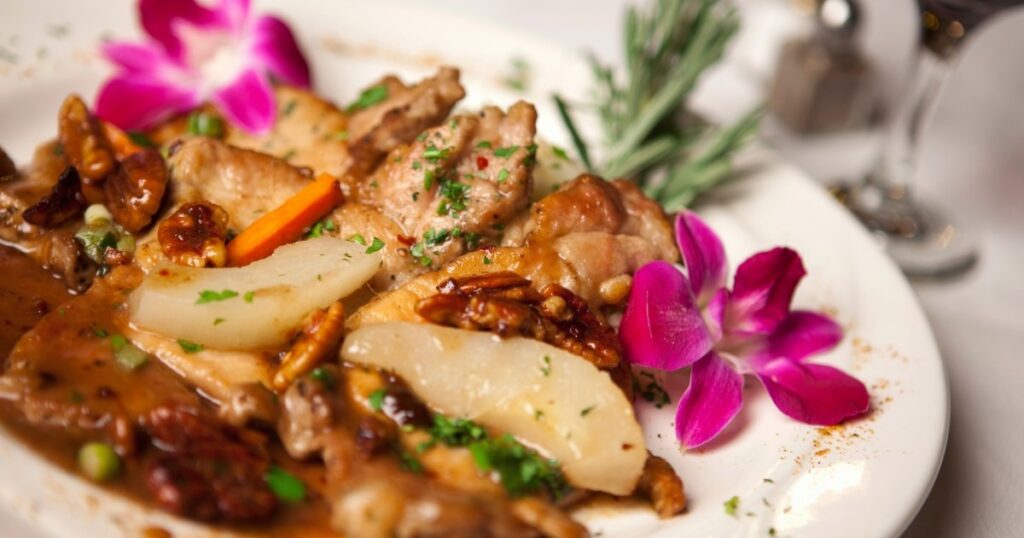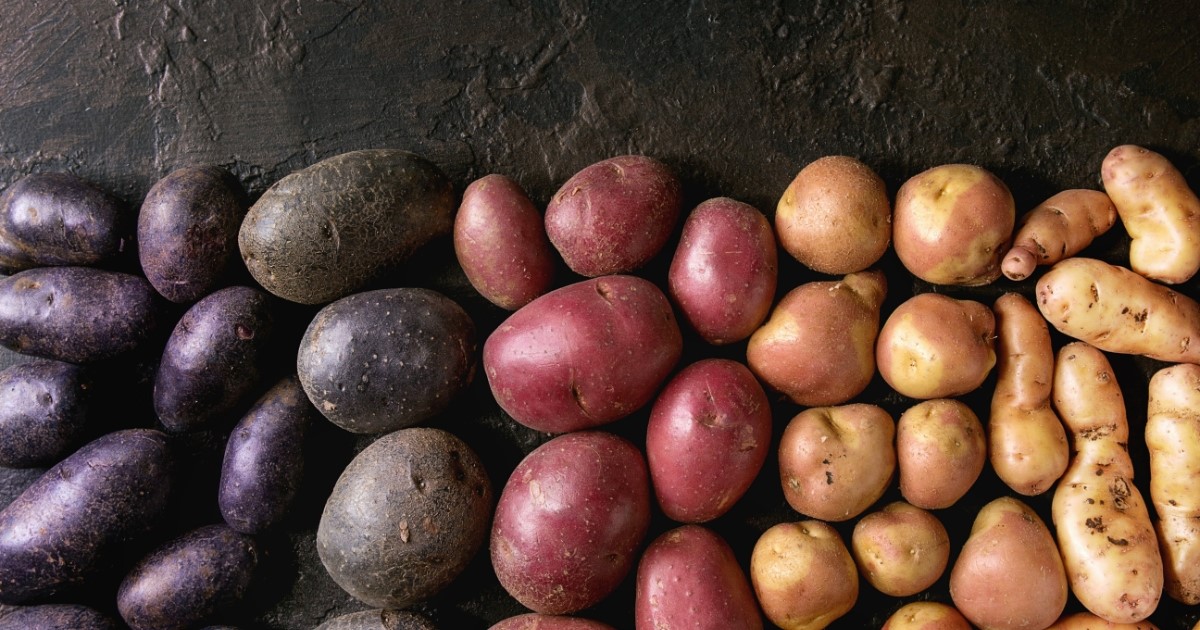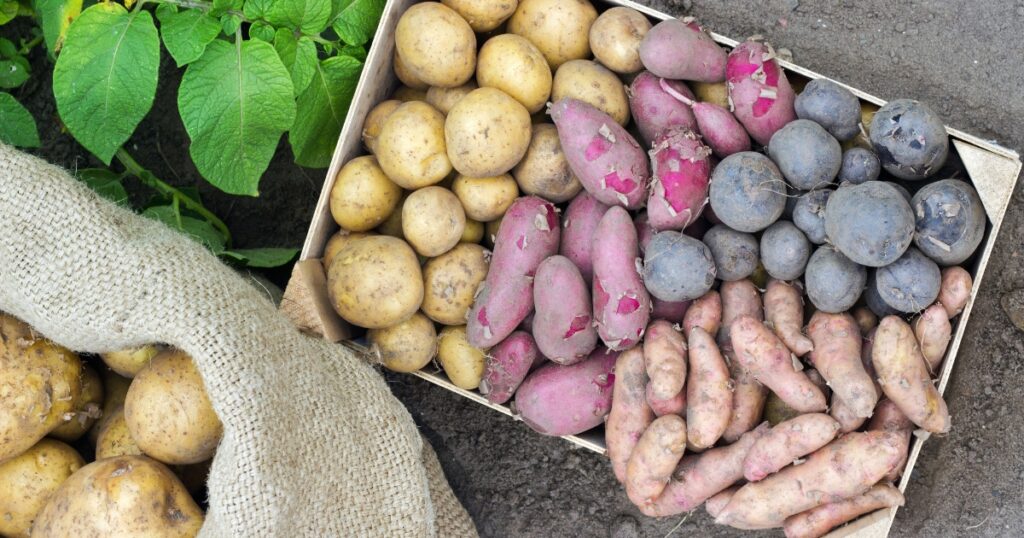A Chef’s Guide to Potatoes – The Ultimate Restaurant Kitchen Staple
Table of contents
-
-
-
1. Budget-Friendly, Profit-Boosting
-
2. Portion Control Without Sacrifice
-
3. A Perennial Customer Favorite
-
4. Versatility for Every Meal
-
5. Kitchen-Friendly & Operationally Efficient
-
Understanding Potato Types
-
1. Starchy Potatoes
-
2. Waxy Potatoes
-
3. All-Purpose Potatoes
-
Know Your Spuds – Popular Potato Varieties
-
1. Russet Potatoes
-
2. Yukon Gold Potatoes (All-Purpose)
-
3. Red Potatoes (Waxy)
-
4. Fingerling Potatoes (Waxy)
-
5. Purple Potatoes (All-Purpose)
-
6. Round White Potatoes (All-Purpose)
-
7. New Potatoes (Waxy)
-
8. Sweet (All-Purpose)
-
9. Yams
-
Potato Sizing, Count, and Grades: A Chef’s Cheat Sheet
-
1. Sizing
-
2. Count per Bag
-
3. Grades
-
Storing Potatoes the Right Way
-
Potato Trends in 2025
-
Sourcing the Best Potatoes in NYC
-
FAQ
-
-
The humble potato has been gracing plates worldwide for centuries. Whether it’s the crispy fries at your neighborhood burger joint or a velvety purée on a Michelin-starred menu, potatoes are the unsung heroes of every restaurant kitchen.
But here’s the thing: not all spuds are created equal. Choosing the right potato and preparing it properly can transform your dishes from good to unforgettable. Let’s explore the secrets behind this versatile tuber and how to make it a standout on your menu.
Why Choose Potatoes for Restaurant Profitability
When rising food costs force restaurants to rethink their menu strategies, potatoes are a must-have ingredient for restaurant profitability. Affordable, versatile, and always a crowd-pleaser, they help chefs craft satisfying dishes while keeping food costs in check. Here’s why they deserve a prime spot on your menu:
1. Budget-Friendly, Profit-Boosting
Potatoes deliver incredible value, with wholesale prices typically under a dollar per pound. They add bulk and substance to dishes without breaking the bank, allowing restaurants to maintain solid profit margins while serving generous and hearty meals.
2. Portion Control Without Sacrifice
Balancing portion sizes is a fine art in restaurant kitchens. With 3 grams of protein per serving, potatoes can help reduce the size of premium protein dishes, whether a perfectly plated steak with a rich potato purée or a loaded baked potato alongside a smaller fish cut.
3. A Perennial Customer Favorite
Potatoes are America’s most beloved vegetable, and that’s not changing anytime soon. 80% of Americans eat potatoes every week, with 1/3 rating potatoes at least three times per week. Whether it’s crispy fries, creamy mashed potatoes, or golden hash browns, they consistently draw diners in and keep them coming back.
4. Versatility for Every Meal
For breakfast, lunch, and dinner, potatoes do it all. While fries remain the ultimate comfort food, followed by mashed potatoes and potato salads, diners are increasingly open to experience potatoes in new creative offerings.
5. Kitchen-Friendly & Operationally Efficient
Beyond their customer appeal, potatoes are a dream for back-of-house efficiency. They’re easy to prep, store, and incorporate into various dishes, simplifying kitchen workflows. Plus, they hold up well in bulk prep, reducing food waste and ensuring consistent quality in high-volume service.
Understanding Potato Types
“A potato is a potato”…or is it? Every chef knows there’s more that lies beneath the skin. Understanding the balance of starch and moisture is the secret to getting the most out of this versatile ingredient. Let’s take a closer look at the three main types of potatoes chefs prefer to use and what they bring to the table:
- Starchy Potatoes:
High in starch and low in moisture, these potatoes have a fluffy texture when cooked. They’re ideal for baking, frying, and mashing. However, they can fall apart when boiled. - Waxy Potatoes:
These are low in starch but high in moisture, giving them a firm texture. They hold their shape well when boiled or roasted, making them perfect for salads, gratins, and stews. - All-Purpose Potatoes:
A balance of starch and moisture makes these versatile for almost any cooking method, such as boiling, mashing, roasting, or frying.
Know Your Spuds – Popular Potato Varieties
1. Russet Potatoes (Starchy)
Thanks to their fluffy, dry texture, russets are the classic potato everyone knows and loves. They’re the gold standard for baked potatoes, creamy mashed potatoes, and crispy French fries.
Available year-round, they’re at their best in fall and winter. With their hearty size and versatility, it’s no surprise russet potatoes dominate U.S. potato farming, making up 70% of all planted acres.
2. Yukon Gold Potatoes (All-Purpose)
Yukon Golds are the ultimate multitaskers in the potato world. Slightly waxy but with enough starch for a smooth, buttery finish, they’re perfect for roasting, mashing, or adding to stews. Their creamy, golden flesh brings a touch of richness to every dish. While you can find them year-round, they shine in late summer and early fall.
3. Red Potatoes (Waxy)
With their firm texture and vibrant red skins, these potatoes hold their shape beautifully when boiled, roasted, or grilled. Their lower starch content makes them a favorite for potato salads or as a colorful side dish. Red potatoes peak in spring and early summer but are widely available year-round.
4. Fingerling Potatoes (Waxy)
Fingerlings are the specialty stars of the potato aisle, with a long, slender shape and creamy texture. Perfect for roasting, pan-frying, or serving whole, they bring a gourmet flair to any dish. Their buttery, nutty flavor shines in simple preparations, making them especially popular in fall and winter menus when hearty meals take the spotlight.
There are many varieties of fingerlings to explore, including marble, purple, and banana varieties, each adding its unique color and character to the plate.
5. Purple Potatoes (All-Purpose)
Purple potatoes are as much a feast for the eyes as for the palate. Their deep purple flesh and medium starch content make them versatile for roasting, purées, or even vibrant chips. Earthy and slightly nutty, they’re typically harvested in the fall, making them a natural fit for bold autumn dishes.
6. Round White Potatoes (All-Purpose)
Also known as chef’s potatoes, round whites are a versatile favorite in professional kitchens. Their medium starch content and thin, pale skin make them easy to cook without peeling. Whether steamed, boiled, or baked into casseroles, they absorb flavors well and shine in simple, comforting dishes. These potatoes are available year-round, with a particular popularity in summer recipes.
7. New Potatoes (Waxy)
New potatoes are the fresh, delicate darlings of the spring harvest. They are picked young and have thin skins and a creamy, moist texture that makes them perfect for boiling, steaming, or roasting whole. Their sweet flavor pairs beautifully with light, seasonal ingredients, making them a springtime favorite.
8. Sweet Potatoes
Though technically not potatoes, sweet potatoes are beloved for their natural sweetness and starchy, creamy texture. When roasted, they beautifully caramelize, making them versatile for everything from fries and casseroles to holiday pies. They peak in late fall and winter and are perfect for cozy, nutrient-rich, cold-weather dishes.
9. Yams
Often mistaken for sweet potatoes, true yams are entirely different. They’re drier and starchier, with rougher skin and a more neutral, savory flavor. Yams are best in slow-cooked dishes where they can soak up bold seasonings. They are mostly imported and most available in fall and winter, adding a unique twist to seasonal menus.
Potato Sizing, Count, and Grades: A Chef’s Cheat Sheet

Understanding potato sizing, count, and grading is essential for chefs looking to stock their kitchens with the right variety of spuds for the proper application. Here’s what you need to know to make purchasing easier:
1. Sizing
Potato sizing is typically measured by diameter, with categories varying slightly depending on the variety. These are the most common sizes:
Size A Potatoes (Large)
- Diameter: 2” to 3.5”
- Uses: These are the go-to choice for baking whole, stuffing, cutting into wedges, or making fries. Their larger size provides even cooking and a substantial presence on the plate.
- Varieties: Russet, Yukon Gold, Sweet Potatoes, Red Potatoes, White Potatoes.
Size B Potatoes (Medium)
- Diameter: 1.5” to 2.25”
- Uses: Best for mashing, boiling, or baking, especially when smaller sizes are preferred for individual portions or recipes requiring uniform cuts.
- Varieties: Red, White, Purple, and Yellow Potatoes.
Size C Potatoes (Small)
- Diameter: Under 1.5”
- Uses: These potatoes are perfect for roasting whole, adding to stews, or creating eye-catching salads. They cook quickly and provide a delicate, creamy bite.
- Varieties: Fingerling, Red, White, Purple Potatoes.
2. Count per Bag
When purchased wholesale, potatoes are typically sold in 50-pound bags. The “count” refers to the number of potatoes per bag, helping chefs gauge the size of individual potatoes for specific uses:
-
- 40-count (Very Large): 18–22 oz.
- 50-count (Large): 14–18 oz.
- 60-count (Large-Medium): 11–15 oz.
- 70-count (Medium): 10–13 oz.
- 80-count (Small-Medium): 9–11 oz.
- 100+ count (Small): Under 9 oz.
3. Grades
Potatoes in the U.S. are graded based on their appearance, quality, and usability. Does this really matter? Turns out it does! Here’s the lowdown on potato grades:
- U.S. No. 1: The gold standard for quality. These potatoes are smooth, firm, and uniform in size and color, with minimal blemishes. Perfect for dishes where presentation matters.
- U.S. No. 2: These spuds may have slight imperfections, such as irregular shapes or minor skin defects. They’re still flavorful and great for dishes that don’t require perfection.
- U.S. Commercial: A more general category with some cosmetic flaws. These potatoes are often used in bulk for making chips or fries.
Find Specialty Potatoes in NYC
Storing Potatoes the Right Way
No one likes seeing their potatoes sprout, wrinkle, or become soft or mushy before using them. With proper storage and handling, potatoes can stay fresh and last for weeks. Rotting potatoes can be highly toxic to people as they can cause serious illness by giving off a noxious solanine gas. So here’s what you need to know to store your potatoes properly at all times of the year:
- For long-term storage, keep potatoes out of the light in a cool, dark, and dry space—paper bags or wooden crates work wonders, while plastic bags should be avoided. At room temperature, potatoes will last for about a week. At lower temperatures (45- 50°F), expect them to last for several weeks, but they will require tempering before cooking to avoid over-browning.
- Steer clear of the fridge. Cold temperatures turn starch into sugar, giving spuds an odd sweetness.
- Keep them far from onions, apples, bananas and avocadoes. These produce items emit gases that speed up sprouting.
- If your potatoes turn green, sprout too much, or become soft, it’s time to discard them.
Potato Trends in 2025

While potatoes are undeniably timeless, culinary trends are shaping their consumption. This year, diners are craving authenticity, sustainability, and boldness, so chefs are meeting the moment with creativity:
- Local and heritage varieties are taking center stage, offering a connection to the land and a chance to explore unique flavors and colors. Heirloom potatoes perfectly fit menus that celebrate origin stories and earth-friendly farming practices.
- Sustainability also shapes how potatoes are used. Potato skins are no longer tossed but transformed into crispy snacks, while yesterday’s mash becomes today’s gnocchi. The trend is clear: less waste, more ingenuity.
- Bold flavors and indulgent dishes are increasingly popular with Gen Z and Millennials; potatoes shine in these flavor-packed meals. Picture creamy mashed potatoes with truffle oil, crispy potato skins topped with gourmet ingredients, rich potato gratins, or dishes infused with global flavors that bring new life to the humble spud.
Sourcing the Best Potatoes in NYC
Chefs know that the perfect dish starts with top-notch ingredients, and Riviera Produce delivers just that. From starchy Russets to waxy reds and unique fingerlings, our wide selection will keep your storage room stocked.
With flexible delivery and second runs across NYC’s five boroughs, Philadelphia, and New Jersey, we make it easy to get the freshest, highest-quality potatoes when needed. Whether you’re looking to source heritage varieties, local stars, or everyday favorites, Riviera Produce is your go-to for exceptional wholesale produce.
Ready to level up your menu? Contact us today, and let’s get those spuds rolling!
FAQ
1. What are the best potatoes for frying, mashing, or roasting?
Due to their high starch content, Russet potatoes are the top choice for frying. Yukon Golds are ideal for creamy mashing, while waxy potatoes like red or fingerling varieties are perfect for roasting, thanks to their firm texture.
2. Does Riviera Produce offer heirloom and local potato varieties?
Yes! Riviera Produce provides a wide selection of spuds, including heritage potatoes with unique flavors and colors, perfect for chefs seeking to add authenticity to their menus.
3. Where does Riviera Produce deliver potatoes?
We deliver to all five boroughs of NYC, Philadelphia, and New Jersey, ensuring fresh, high-quality potatoes reach your kitchen right when needed.
4. Can I order a mix of potato varieties for my restaurant?
Absolutely! Riviera Produce makes it easy to customize your order with various potatoes tailored to your menu needs, from everyday staples to specialty types.
5. How should I store potatoes to keep them fresh?
Store potatoes in a cool, dark, dry place. Avoid refrigeration, as cold temperatures can alter their flavor. Keep them away from onions and fruits to prevent sprouting.
6. Why should I choose Riviera Produce for my restaurant’s potato supply?
With a wide selection of premium potatoes, flexible delivery options, and an unwavering commitment to freshness, Riviera Produce is the go-to wholesale supplier for chefs across NYC, Philadelphia, and New Jersey.

